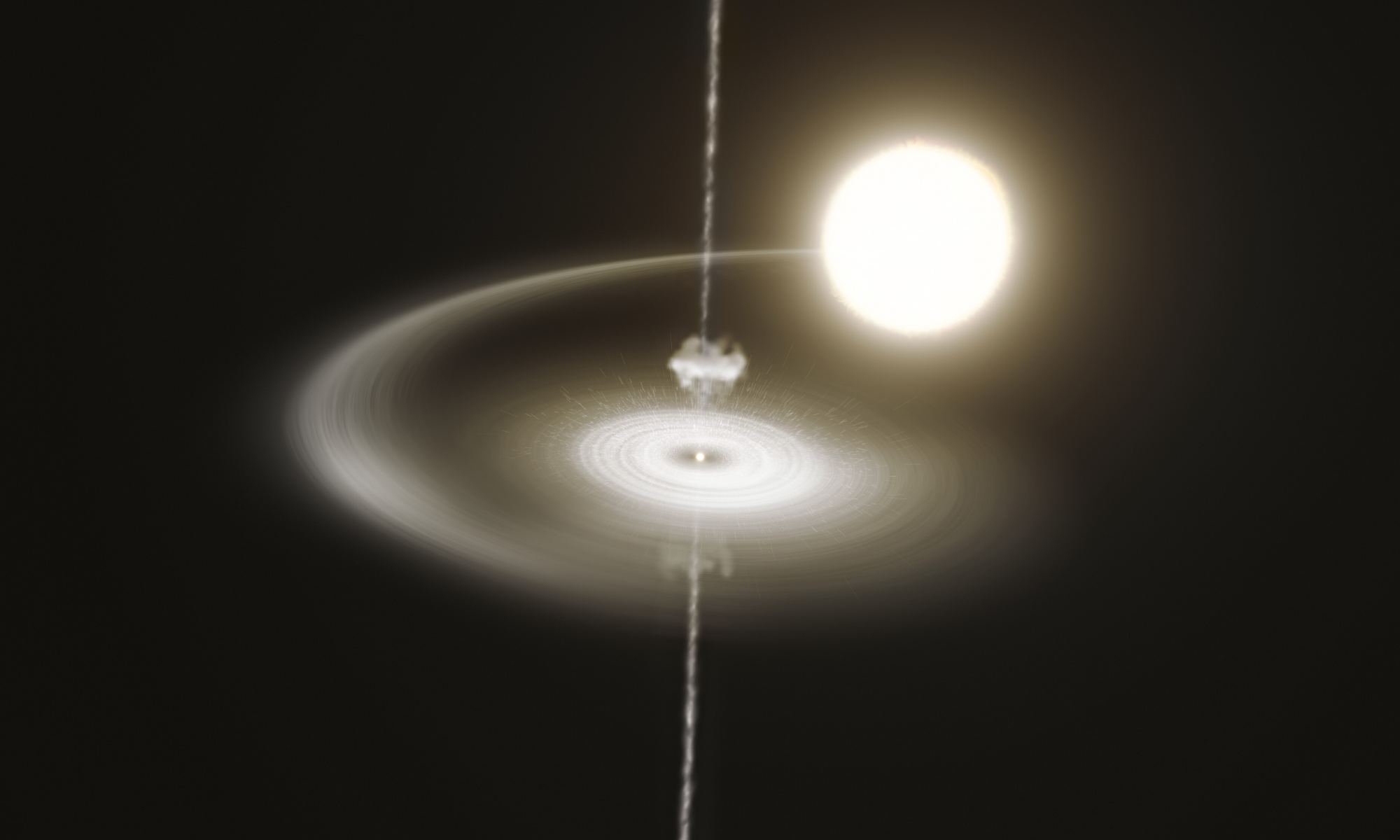Pulsars are the lighthouses of the universe. These rotating dead stars shoot twin jets of radiation from their poles, usually with a predictable rhythm. But sometimes pulsars behave strangely, and one pulsar in particular has had astronomers scratching their heads for years. It’s called PSR J1023+0038, and a decade ago, it shut off its jets and began oscillating between two brightness levels in an unpredictable pattern. Now, scientists think they understand why: it is busy eating a neighboring star.
When a supergiant star approaches the end of its lifespan, it will explode and collapse into a back hole if it has enough mass, or into a neutron star if it does not. Neutron stars are the remaining, ultra-dense cores of the old star. They are often very fast-spinning, and a subset of them become pulsars. PSR J1023+0038 began life this way, and when it was discovered in 2007, it behaved like a normal pulsar.
But it didn’t stay that way.
In 2013, something changed. The radio pulses – evidence of its twin lighthouse beams – shut off. The was a sudden explosion of energy at multiple wavelengths: gamma rays and X-rays increased by a factor of five, and in visible light the star brightened by 1-2 magnitude. Astronomers also discovered that it seemed to have formed an accretion disk: a hot swirling mass of material surrounding the star.
Perhaps most strangely, the star began alternating between two intensities in X-ray wavelengths: a high mode and a low mode, and it has continued like this over the entire decade since. It spends about 70% of its time in high mode, the rest in low, and alternates between the two every few seconds or minutes on an unpredictable schedule.
Recently, astronomers devised an ambitious plan to find out what’s going on.
“Our unprecedented observing campaign to understand this pulsar’s behavior involved a dozen cutting-edge ground-based and space-borne telescopes,” says Francesco Coti Zelati of the Institute of Space Sciences in Barcelona.
These telescopes covered a gamut of electromagnetic wavelengths, and with them, astronomers were able to piece together what was going on.
Here’s what they found. The accretion disk is made of matter being pulled from the pulsar’s neighboring star. This matter, as it closes in on the pulsar and begins to accumulate, is heated by the solar wind. The matter begins to glow in X-ray, UV, and visible light, and the hot, glowing material is what astronomers have been seeing as the pulsar’s ‘high mode.’ Eventually, however, there is a process by which the matter is expelled at high energies, leaving perpendicular to the accretion disc, in the direction of the pulsar’s jets.
“Enormous amounts of matter, similar to cosmic cannonballs, are launched into space within a very brief time span of tens of seconds,” says Maria Cristina Baglio of New York University Abu Dhabi, and the Italian National Institute for Astrophysics.
This violent expulsion results in the pulsar returning to its ‘low mode,’ having removed the heated material from its vicinity.
The cycle then repeats.
Through an incredible collaborative effort by astronomers around the world, using the best instruments humanity has to offer, the PSR J1023+0038 mystery has been solved.
The lessons learned from this weird pulsar have taught us more about the physics of accretion, and that knowledge can now be applied in the study of other unexplained variable phenomena, including the accretion disks of some black holes.
Learn More:
“ESO telescopes help unravel pulsar puzzle.” ESO.
M. C. Baglio et al. “Matter ejections behind the highs and lows of the transitional millisecond pulsar PSR J1023+0038.” Astronomy & Astrophysics.
Featured Image: An artist’s impression shows the pulsar PSR J1023+0038 stealing gas from its companion star. Interactions with the solar wind cause the pulsar to switch two modes of brightness every few seconds or minutes. Credit: ESO/M. Kornmesser.

